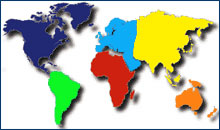The search for the perfect restaurant
Tips for finding great restaurants in Europe
Here are some helpful tips as you go about the business of choosing your daily eats:
Look for places that are crowded. This is the simplest but most important rule. If people are staying away, there's a reason.
Look in your guidebooks. We travel writers go to great trouble and indigestion to sample a wide range of local restaurants in search of the best and most interesting places. Read the restaurant reviews carefully and try a few that sound right up your gastronomic alley, but don't feel that you have to patronize only those joints. Poke around to find your own undiscovered gem of a bistro.
Get advice from your friends. I've eaten some of my best meals on the advice of fellow travelers who've already scoped out a city. Word of mouth is a great way to find memorable meals.
Ask locals. Taxi drivers, the person from whom you buy postcards, and anybody with whom you strike up an acquaintance are all good people to ask for advice on where to eat, but hotel concierges sometimes are not. Some of them strike quid pro quo agreements with a nearby joint—it may indeed be a good restaurant, but there's no guarantee.
Look for places full of locals, not visitors. If a trattoria seems to be entirely tourist-ridden, don't even bother. If the locals steer clear, there's usually a good reason. For years, a smiling bald man has been standing on a sidewalk across the street and just down from the entrance to the Vatican Museums in Rome, waving a menu to attract tourists to his restaurant. The restaurant is usually crowded, but I've never seen an Italian in there—one look at the slop they're serving tells me why.
Be wary of restaurants in popular sightseeing areas. There may be perfectly fine restaurants and even great little bistros right near a major sight. But the parts of town most frequented by visitors also inevitably draw the largest proportion of low-quality joints—those that pander to out-of-towners by serving bland, uninventive versions of the local cuisine (like that place I mentioned across from the Vatican).
Case several places before choosing. Look inside to gauge the clientele and read the menus posted outside to compare prices and offerings.
Look for the menus without English. The sign "We Speak English" should read "We fleece tourists." Good restaurants don't have to play on visitors' fears of the language to drum up business. This is far from a hard and fast rule—in smallish towns with any tourism, every menu will be in English—but often the place with an untranslated menu will be better, or at least more authentic, than a place with each dish translated. Although those menu translations may be helpful (and can save you from having to furtively consult your phrase book), they are not necessary. In most European restaurants these days, at least one person speaks a smidgen of English. If not, in a pinch you can set aside pride and decorum and make do with barnyard noises. Point to a dish, raise your eyebrows, and cluck like a chicken. The waiter will usually catch on and say something like, "No, No. Baa-aa-aa-aa." Now at least you know that one's lamb.
Find the place with no sign, no menu. Tiny, hole-in-the-wall restaurants with no menu at all or one on a chalkboard will often treat you to the greatest and most authentic food you'll ever find. It'll just be you, eight tables, mamma in the kitchen, a passel of neighborhood regulars watching the soccer match on television, wine from the family estate, and heaping portions of hearty, home-cooked, utterly incredible local food.
Related Articles |
Outside Resources |
This article was last updated in August 2007. All information was accurate at the time.
Copyright © 1998–2010 by Reid Bramblett. Author: Reid Bramblett.



 ShareThis
ShareThis

